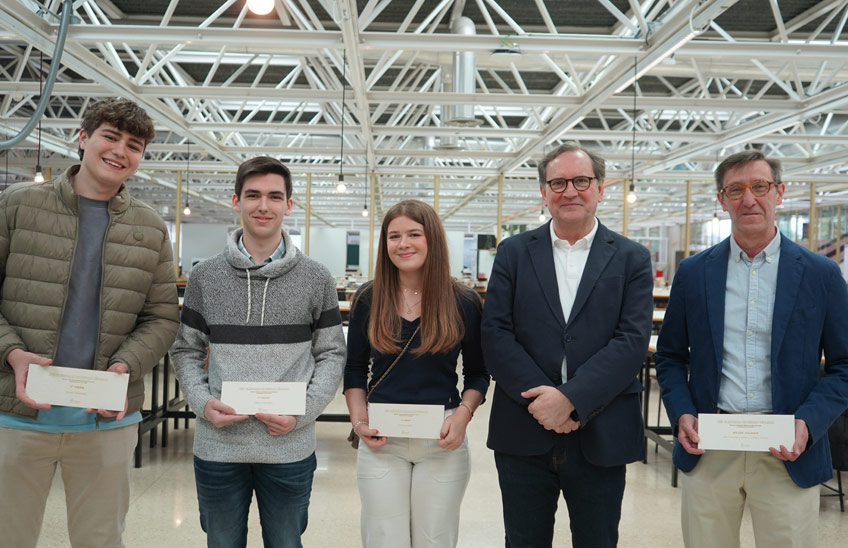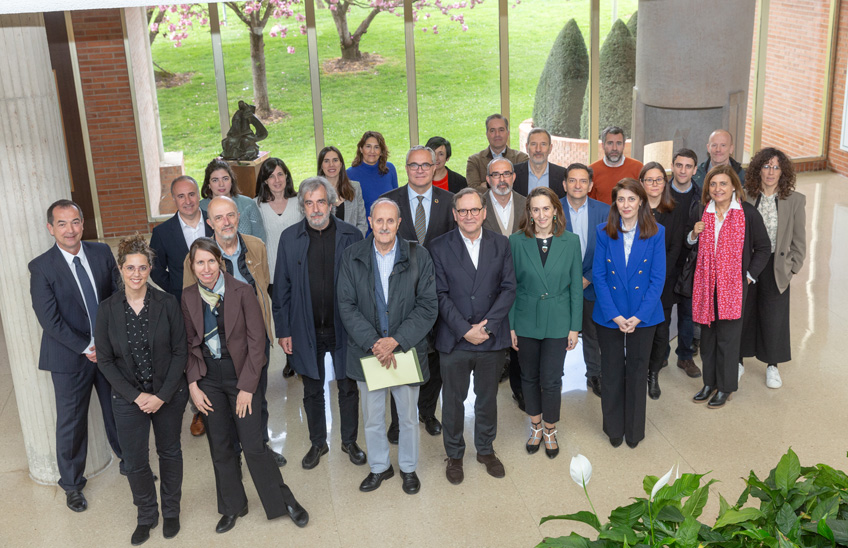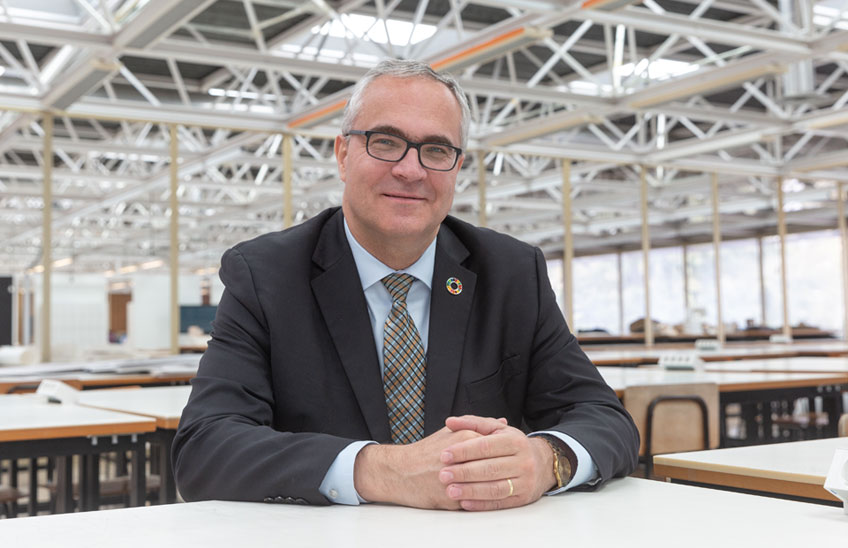20210916_tantaka_navilens
University implements inclusive signage system for people with disabilities
The academic center has reached a agreement with the signature NaviLens that has "tagged" all the buildings of the campus

PhotoManuelCastells/From left to right, the professor and president of the Iddeas Foundation, Luis Casado; Carolina Baiges, manager of the Unit for the Care of People with Disabilities of Tantaka and the student of Degree of design, Itsaso Iriondo.
16 | 09 | 2021
goal The colour labels have arrived at campus of the University of Navarra with the aim of favouring the mobility of people with a visual or hearing disability subject .
The academic centre, through the Planning and Organisation Service of campus and Tantaka, the University's solidarity time bank, have reached an agreement agreement with business NaviLens, at partnership with the IDDEAS Foundation and two students from Degree at design, Itsaso Iriondo and Cristina Francés, to "tag" different places and buildings with the goal to make campus more accessible to people with disabilities. The NaviLens and NaviLens Go apps are useful for people with visual impairment, mobility or other disabilities, but also help any Username who needs information on their way around campus.
This is a signage system using labels similar to QR codes that are identified by the camera on the mobile phone at Username. Thanks to NaviLens Go, available on both iOs and Android, the mobile phone provides voice, text and image information about the different buildings and services. The codes can be located at a distance of up to 10 metres using the mobile phone camera without the Username having to accurately scan its surroundings.
In addition to audio, the application allows uploading other content such as videos, texts, images, sign language, which can be useful for other hearing impaired people or as an information channel also for people who do not have any disability.
Users can configure the way they want to receive the information: voice-over, sign language, or even adapted for children. In addition, the text can be automatically translated into 33 languages, making it a very useful tool for international students and visitors.
In principle, it is planned to install30 NaviLens markers on the entrance to each building of the campus, as well as inside the Central Building. "The goal is to make the University an inclusive and accessible institution by being proactive towards the needs of people with disabilities," said Cristina Muñoz, manager of the Planning Service and design of Campus.
For his part, Luis Casado, Adjunct Professor at School Communication and president of the Iddeas Foundation, highlighted some of the main advantages of this technology: "NaviLens, for the moment, is going to help those of us who cannot see to obtain precise information about the buildings at campus in an autonomous, comfortable and safe way, and to locate strategic points for moving around Central Building. In the future, the system can be adapted to other functional profiles with language sign or easy-to-read information," he said.
Itsaso Iriondo, a student at Degree of design has collaborated in this initiative: "The design of campus must adapt to the needs of all people and for this we have to take advantage of the potential of innovative solutions such as NaviLens. A short time ago, the fact that a blind person could move safely and autonomously through unfamiliar environments was science fiction; today it is possible. It is about technological and person-centred inclusion", he concluded.





